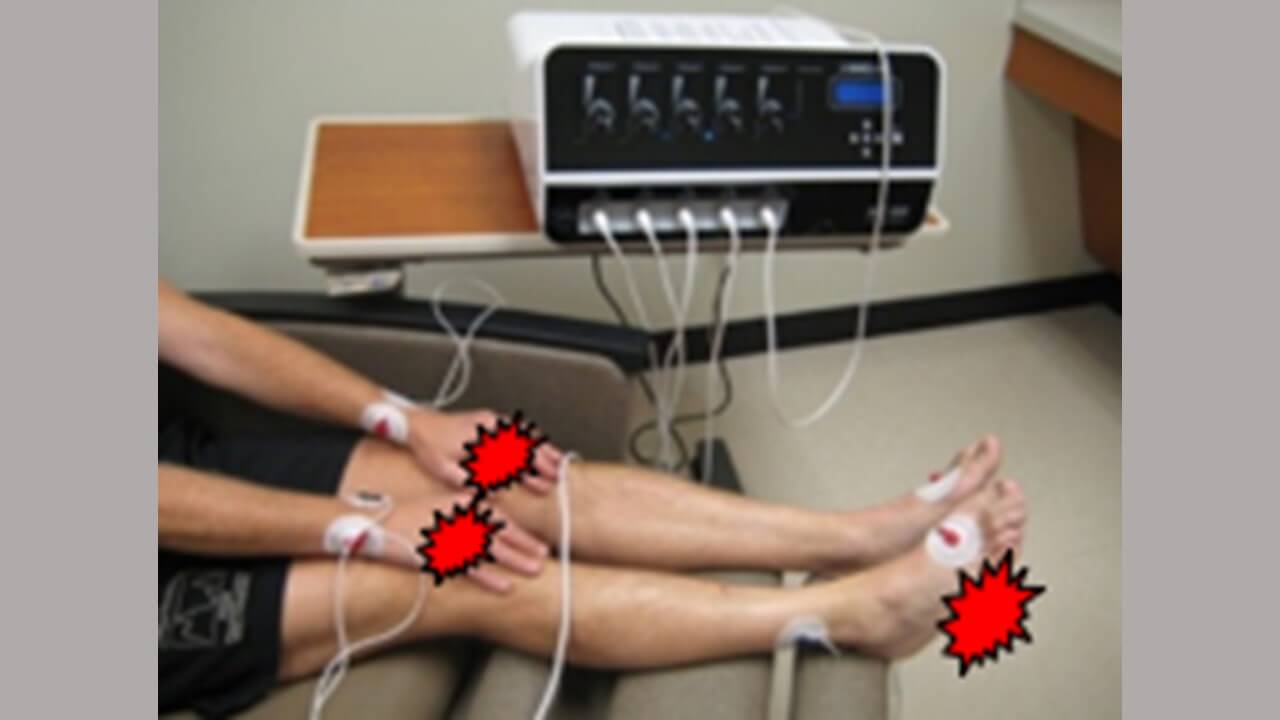BALTIMORE — Whether we’re talking about arthritis or a lingering back injury, chronic pain can be a serious detriment to one’s quality of life. Fascinating new research, however, is putting forth a potential new way to effectively alleviate chronic pain. Scientists at Johns Hopkins Medicine say their latest work indicates a noninvasive pain treatment called scrambler therapy is capable of yielding significant relief among approximately 80 to 90 percent of chronic pain patients.
Researchers add that scrambler therapy may even be more effective than another noninvasive therapy: transcutaneous electrical nerve stimulation (TENS).
Scrambler therapy was approved by the U.S. Food and Drug Administration in 2009 and entails administering electrical stimulation through the skin using electrodes placed in areas of the body above and below the source of the chronic pain. The aim of the therapy is to capture the nerve endings and replace signals from the area experiencing pain with signals coming from adjacent areas experiencing no pain.
Consequently, this “scrambles” the pain signals being sent to the brain, explains primary study author Thomas Smith, M.D., the Harry J. Duffey Family Professor of Palliative Medicine at the Johns Hopkins Kimmel Cancer Center and a professor of oncology and medicine at the Johns Hopkins University School of Medicine.

All forms of chronic pain, and close to all nerve and neuropathic pain, stem from two factors — pain impulses originating from damaged nerves that send a constant barrage up to pain centers in the brain and the failure of inhibitory cells to block those impulses and stop them from becoming chronic.
“If you can block the ascending pain impulses and enhance the inhibitory system, you can potentially reset the brain so it doesn’t feel chronic pain nearly as badly,” Prof. Smith says in a media release. “It’s like pressing Control-Alt-Delete about a billion times.”
A number of patients tend to “get really substantial relief that can often be permanent,” Smith adds. Patients typically receive three to 12 half-hour sessions.
“Scrambler therapy is the most exciting development I have seen in years — it’s effective, it’s noninvasive, it reduces opioid use substantially and it can be permanent,” Prof. Smith concludes.
TENS therapy, meanwhile, also works by administering low-intensity electrical signals through the skin. However, TENS uses a pair of electrodes at the sites of pain. Pain relief often disappears when or soon after the electrical impulses are turned off, Prof. Smith notes. An earlier study cited in the review paper evaluated the impact of TENS across 381 randomized clinical trials, with researchers noting a non-statistically significant difference in pain relief between TENS and a placebo procedure.
The study is published in the New England Journal of Medicine.
You might also be interested in:
- Some antidepressants do nothing at all for patients dealing with chronic pain, study reveals
- No more pills? Psychological treatment could provide lasting relief for chronic pain
- Revolutionary spinal cord stimulation is helping patients regain arm mobility after a stroke


I’m in Australia. How can I access this treatment for chronic back pain due to severe spinal stenosis & nerve impingement.
Wow that’s the way I have been using TENs for years! With great success on myself and on friends and neighbors. Never on the painful spot itself instead I try to visualize what I think off as ” the path” and place the electrodes there. I use a super powerful unit that was ummm rehomed from Dr’s office many many years ago. Cool thanks for the confirmation!
Who administers scramble therapy?
Is this being used on patients in doctors offices or still in a study environment?
Just from briefly summarizing this article my impression is the mode outline they’re promoting in this scrambler therapy is essentially a form of tens electrical pain blocking therapy. I realize so because of the description of mechanism blocking transmission.There’s a competition between the large C-pain fibers and small c-pain fiber nerve impulse transmissions. The one that blocks is faster than the 1 that transmits the pain from the irritated lesion site.
That’s just my opinion from an old retired former chiropractor. 😆
My daughter has just returned to the UK after having Scrambler in Germany. She suffers from CRPS and was in constant pain, at the Highley level of the McGill pain scale. She was using a wheelchair and was bedbound. After 13 sessions between 45 and 60 mins her pain levels dropped to a 1, and on our return they have dropped to a 0. Best of all she’s walking and has her childhood back. She is off all her pain meds. This therapy is a game changer and needs to be available in the UK. Whilst in Germany we met several people having scrambler who have recieved fantastic results for varying neurological pain.
Is it available in the US or Canada? Where did you go in Germany?
Is scrambler therapy available in the U. S?